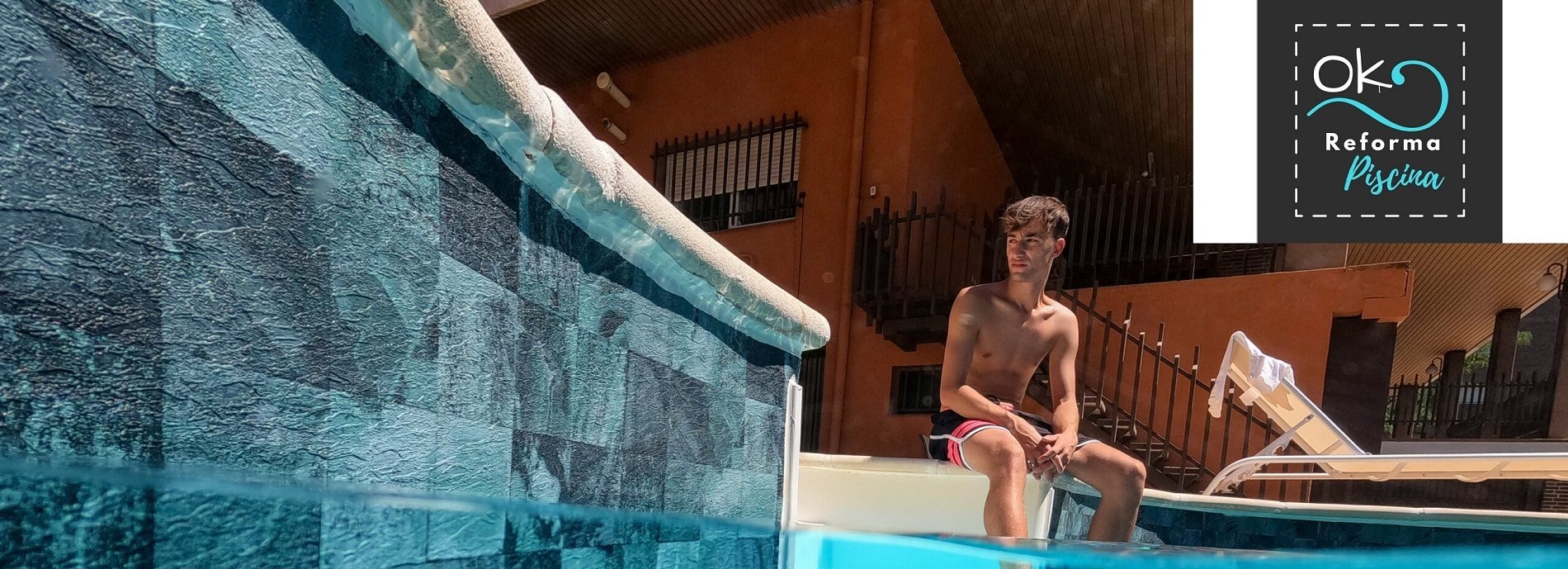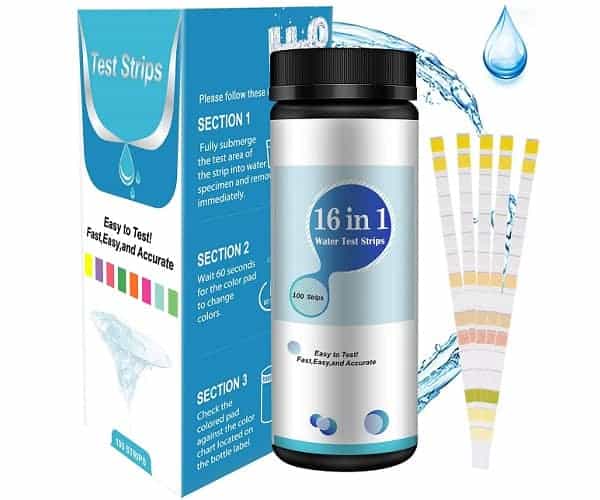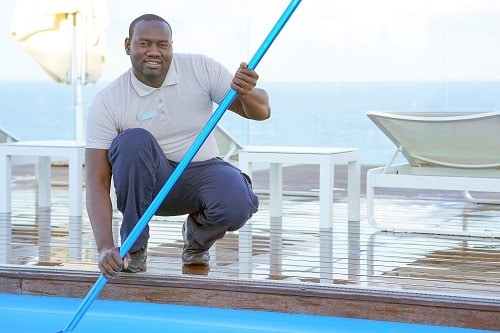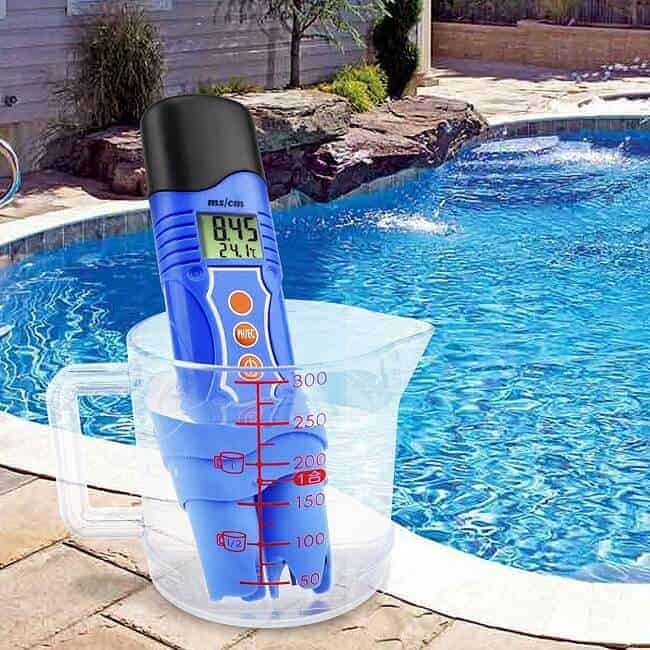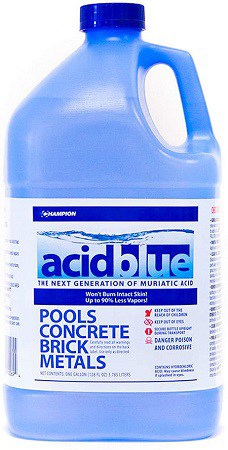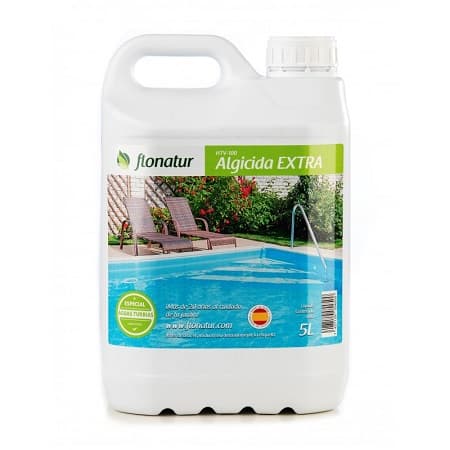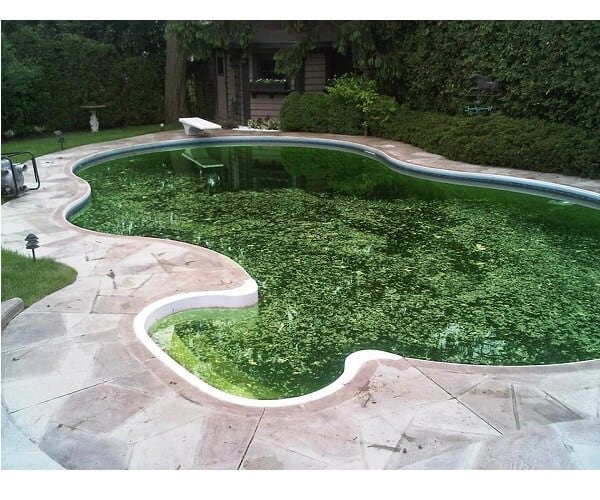
Table of contents of the page
En Ok Pool Reform and within the Manter Pools guide We offer you an article about: Why does algae appear in the pool?.
What are algae?
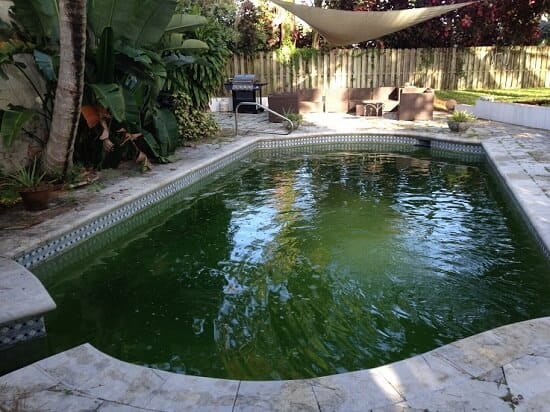
Algae are microscopic plants in your pool
Algae are microscopic plants that can appear in the pool due to natural elements, such as rain and wind, or they can also adhere to something as common as beach toys or swimsuits.
Be very careful with the care of the pool since the algae scum proliferates very quickly.
These microplants can multiply quickly and bloom into an eyesore. This can be a big problem for your pool surface and equipment if left untreated.
Algae in the pool causes and prevention
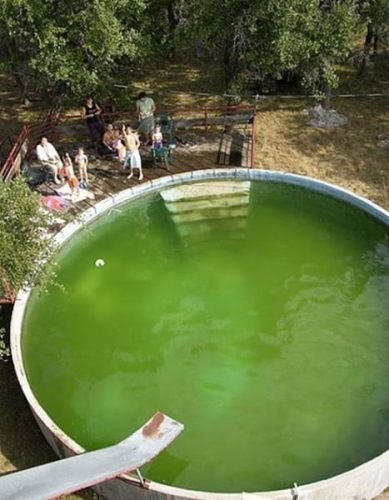
Main reasons why algae appear in the pool?
Then We list the main reasons why pool water turns green and then we present each product one by one..
- Insufficient water filtration
- Poor cleaning of the pool
- Lack of chlorine
- Misalignment of the chemical values of the pool (mainly what are the Pool pH, alkalinity in the pool and la incidence of lime in the pool).
- Presence of Pollen
- Presence of metals in water
- Not having added a preventive algaecide.
- Adverse weather: rain, leaves and/or high temperatures
- Phosphate control
1st Most Common Reason Pool Water Turns Green
Insufficient water filtration
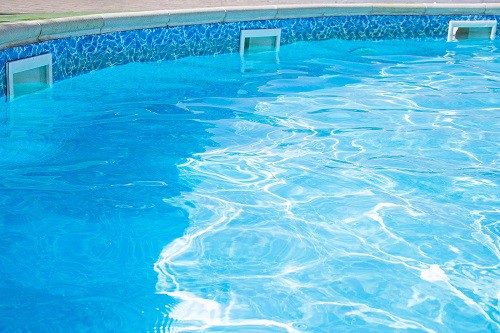
Preventive techniques for green water in the pool
In summary, Preventing pool algae starts with testing your pool water at least once a week. Keep water clean and moving to help prevent algae blooms every day!
Explanation of why lack of filtration in water produces algae
One of the main reasons why algae grows in swimming pools is poor water circulation.
However, if the filter is not working properly or if a smaller filter is used for a larger pool, there is a possibility of dead spots appearing in certain parts of the pool. These dead spots or low flow areas can promote algae growth.
Algae needs standing water to grow, so as long as the water keeps flowing, you won't have much to worry about.
Periodic testing is necessary to determine if water is flowing consistently in all areas of the pool or if there are points where the flow is greatly reduced or if a dead spot exists.
Filtration during the summer
The filtering system must operate at least 8 hours a day to ensure good purification. You must periodically clean the filter, whenever you detect that the pressure increases, to eliminate the algae that is deposited on it.
2nd Most Common Reason Pool Water Turns Green
Poor cleaning of the pool

The most important source for the appearance of algae is waste
The most important source for the appearance of algae is waste. Therefore, It is very important that you maintain correct disinfection of the pool water: sufficient hours of filtration, regular cleaning of both the bottom and walls of the pool, as well as the skimmer baskets and the pump.
Finally, you must also verify that unless you have the dirty pool filter or perhaps the pool's filter load is saturated and needs to be renewed (sand or flint, filter glass, etc.).
Importance of cleaning the bottom and walls of the pool
- Un automatic pool cleaner It can be very useful to prevent dirt from settling at the bottom.
- If you don't have one, use a brush to clean the bottom and walls at least once a week. In this way, you will eliminate algae and spores attached to the surface of the pool. Therefore, we provide you with the page of: Manual pool cleaning.
- Likewise, we leave you a link where you can find a guide with the steps to maintain proper cleaning in the pool.
3rd most common reason why pool water turns green
Lack of chlorine
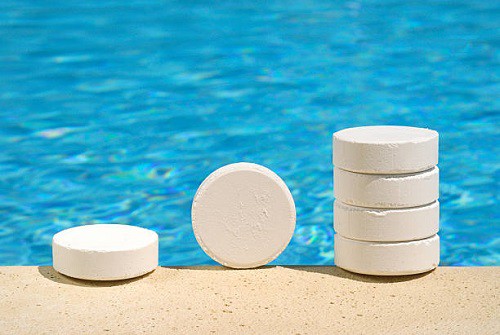
Explanation of why a lack of chlorine in water produces algae
- Secondly, a fairly common factor in the appearance of algae is a lack of chlorine, since without chlorine in the water, the pool will quickly begin to develop algae.
- If chlorine is not added to the water once this process begins, algae can grow to a point where the entire pool turns green in one day. And, in turn, The hotter the water, the faster this process will be.
- Additionally, unchlorinated water, especially if it has an algae bloom, is not safe for swimming and can be a breeding ground for mosquitoes and other insects.
4rd most common reason why pool water turns green
Misalignment of pool chemical values
Pool pH imbalance
Reminder: It is very important to keep the pH value between 7,2 and 7,6; Otherwise, the chlorine loses effectiveness and will not be able to eliminate the spores and algae present.
Pool alkalinity imbalance
Misalignment of pool lime levels
5rd most common reason why pool water turns green
Presence of Pollen in the pool

Explanation of why the presence of pollen in water produces algae
- As is known, pollen is produced by nearby plants and trees and is transported to the pool water by the wind and since Pollen is too small to be removed by a standard pool filter, the amount of pollen will continue to build up throughout the year.
- As the amount of pollen builds up in the water, it begins to settle on the coating and can be mistaken for green or mustard algae.
- If the pollen level continues to rise, it can eventually cause all of the pool water to turn green.
6rd most common reason why pool water turns green
Presence of metals in water
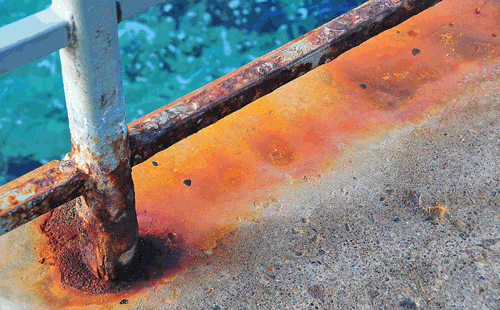
Explanation of why the presence of metals in water produces algae
- The final cause of green pool water is metals, usually copper.
- Metals can be introduced through many sources; such as fountain water, cheap algaecides, or, if the water is acidic, from metal pool components such as copper heating elements.
- When you hit a pool with metals in the water, the metals will rust.
- If enough metals are present in the water, this process can cause the water to turn green.
- If left untreated, the problem will continue to worsen and stain the pool's finish, potentially permanently.
- Anyone with blonde hair who swims in a pool with excess metals will also have green hair.
7th Most Common Reason Pool Water Turns Green
Not having added a preventive algaecide
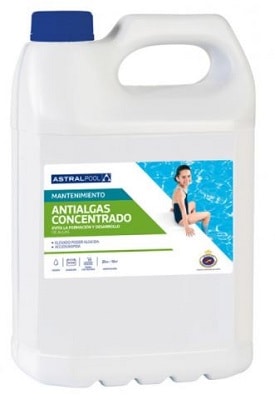
Adhere a preventive algaecide weekly
- Algaecides are best used in small weekly doses when pool conditions are normal.
- This will kill algae populations before they have a chance to grow.
8th Most Common Reason Pool Water Turns Green
Adverse weather: rain, leaves and/or high temperatures

Explanation of why adverse weather helps produce algae
- Always maintain consistency in controlling the values and cleanliness of the pool water and even more so in adverse climates for the pool (rain, falling leaves, dirt or any other type of transmitter).
- Special attention must be paid to pools located in areas with a very hot climate, since algae proliferate more quickly in warm waters.
9rd most common reason why pool water turns green
Phosphate control
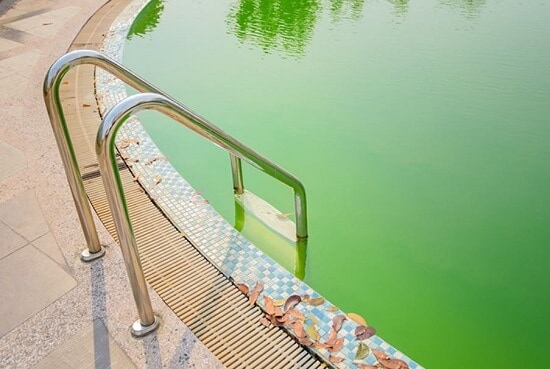
Algae proliferate by feeding on phosphates
In the event that some of the circumstances that we have been detailing come together: insufficient water recirculation, pH imbalance, low amount of disinfectant, etc. lThe probability of the appearance of algae will be almost certain because they then proliferate by feeding on the phosphates present in the water.
Maintain the level of phosphates in the water
- In the case of having an outdoor pool, it is inevitable to have the presence of micronutrients such as phosphates (nitrogen, carbon, etc.).
- The growth of algae in the pool will depend directly on the presence of phosphates.
- According to our experience, it is better not to exceed the value of 300ppm.
Remove algae in the pool with phosphate remover
If you have algae in the pool, you should use a pool phosphate remover and let the pool filter without bathing for 2 days.
Video tutorial: why do algae appear?
How to eliminate pool algae based on its type
Generic treatment to remove pool algae
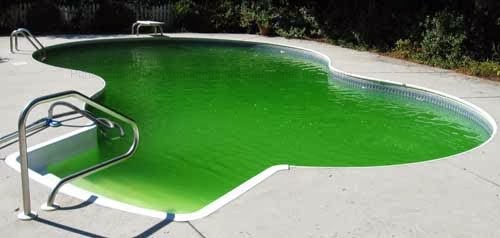
1st step Remove pool algae
Vacuum pool manually
- Vacuum the pool manually. Ideally, you will manually vacuum directly to remove debris, bypassing the filter and preventing recirculation of contaminated water. When vacuuming your pool manually, pay special attention to areas with algae.
- The automatic or robotic pool cleaners They are not suitable for cleaning algae.
2 step how to remove algae from the pool
Brush pool bottom and walls

- Rubbing algae from the pool walls allows the disinfectant to penetrate deeper into the remaining algae.
- It also removes the sediment it has cleaned so it can be removed and filtered.
3rd step remove pool algae
Adjust water chemical values
- Use your test strips, digital equipment, or liquid equipment to test your alkalinity and pH.
- Balancing your water chemistry now ensures your sanitizer is effective against algae.
- High pH (our blog post: how to increase pool pH) or low alkalinity (page: how to increase pool alkalinity) will especially inhibit the impact of the pool.
4 step remove algae pools

Obviously, the treatment dose will be more or less aggressive depending on the amount and type of algae present. in the pool.
Follow the package directions to determine the dosage for your pool size, then multiply it by two, three, or four, depending on the type of algae you have.
- Green Algae: Clash x2
- Yellow or dark green algae: Shock x3
- Black Algae: Clash x4
5th step eliminate pool algae
Filter pool water

- When your shock treatment kills algae, your water will turn cloudy blue. Run your filter continuously for a minimum of eight hours until the water becomes clear.
- You can add a pool water clarifier to speed up the process.
- Be sure to check if you need to top up the water level before turning on the pump.
6 step remove algae pools
Check pool chemistry

- Test your pool water again
- You want to make sure the water chemistry is balanced and have your chlorine level return to normal before anyone gets back in the water.
7th step eliminate pool algae
Clean the pool filter

- Lastly, it is a good idea to thoroughly clean your filter by soaking it in diluted muriatic acid, or simply replace it.
- For
What is muriatic acid used for in the pool?
Muriatic acid for swimming pool price
Using flocculant to eliminate severe cases of pool algae
How to remove severe algae from the pool
To get rid of severe green algae quickly, go ahead and perform a flocculation treatment in the pool.. This additive adheres to floating algae particles, making it easier to vacuum them out of the pool.
How to flocculate a pool
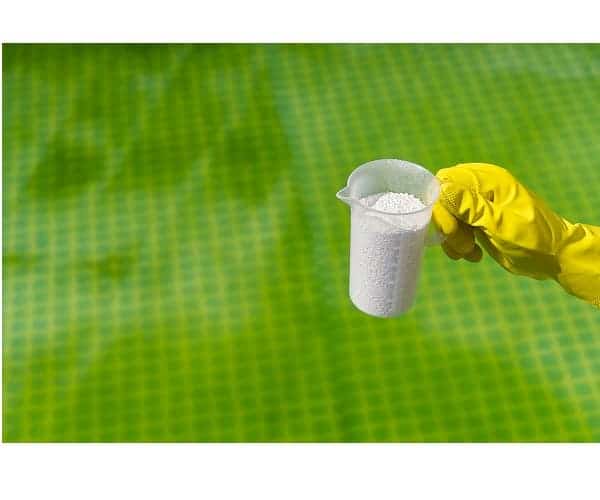
Steps to flocculate a pool
- The first step to start the procedure on how to flocculate a pool should always be to check and adjust the values (7.2 and 7.6 (pH), and between 0.5 and 1.5 gr/l (chlorine)).
- Second, wash the pool filter.
- Then, change the multifunction valve to the off position. recirculation and pump stopped.
- Know the volume of water in the pool in cubic meters (m3) that has the pool.
- We will apply the dosage amount of the flocculant according to the cubic meters of the pool and will depend on its format (you can see the specifications below).
- Leave the pool purifier in operation for 24 hours so that dirt flocs can form and fall.
- After 24 hours, change the multifunction valve to the filtration position.
- Next, we connect the manual pool cleaner and vacuum while filling the pool with water with a hose.
- The cleaning and particle collection process is done with gentle movements so as not to stir the water.
- At the same time, we activate the pool purifier (the dirt will be trapped in the filter).
- All this, checking while we are carrying out the removal of the rubbish and every so often that the manometer of the sand filter does not rise in pressure.
- If we are cleaning and see that the pressure increases, we will wash the sand before continuing to vacuum (to prevent the filter from clogging).
- Next, we wash the sand from the pool purifier.
- We carry out a new 24-hour pool filtration cycle in progress to purify the water.
- Check the condition of the sand in the pool filter: If it can be moved and is not sticky, perfect, but if not, change the sand due to poor conditions.
- Finally, if the sand is in good condition, wash it last.
Buy flocculant to clean pool algae
Flocculant in tablets price
[amazon box= «B00IQ8BH0A, B01L7K47KU, B003F04UFI, B071V71DFG » button_text=»Buy» ]
liquid flocculant price
[amazon box= «B073CVKK1W, B00GXKHR2A, B08BLSNDMG » button_text=»Buy» ]
Use of algaecide NOT advisable to get rid of algae in the pool
Pool anti-algae: It is not a quick solution to completely get rid of algae
Algaecide is not a quick fix to completely get rid of algae in your pool.
It is more often used as a preventative measure than as a reactive treatment. These chemicals contain components that kill algae but also prevent its growth in your pool.
You may be wondering why we haven't told you to use an algaecide to get rid of algae in your pool. Although some types of pool algaecide can kill algae, The product is much more effective as a preventive measure.
Check out our article on: How and when is anti-algae used in the pool?
The pool anti-algae does a better job as a preventive effect
Pool Anti-Algae is a perfect algaecide that serves to prevent the formation of algae, with high bactericidal, algaecide and fungicide power, intended to prevent the formation and development of algae in the pool water.
Piucine anti-algae: effective with built-in flocculating action
In fact, it is very effective with built-in flocculating action, and at the same time clarifies the water thanks to its flocculation capacity, reduces chlorine consumption and reduces unpleasant odors.
Pool anti-algae treatment as a preventive effect
Steps to apply pool anti-algae as a preventive effect
- After cleaning and shocking your pool, wait for the chlorine to drop below five parts per million,
- then add a dose of algaecide.
- Pour the necessary dose into a container with water and distribute this solution evenly over the surface of the pool.
- The addition of chemical products will preferably be carried out at dusk and without the presence of bathers in the pool water.
- Brush your pool to loosen any last bits of algae that you can't see.
- The algaecide will kill it so it can leach out.
In sum, We leave you the link so you can compare all the information about: How and when is anti-algae used in the pool?
Preventive anti-algae maintenance treatment dosage
- Once a week, add 0,5 l of preventive anti-algae per 100 m3 of water.
- These doses are indicative in nature, and can be modified depending on the characteristics of each pool, climate, etc.
Buy pool anti-algae as a preventive effect
Pool anti-algae as a preventive effect price
[amazon box= «B07NWY31WL, B01BMPD0QC, B09T7B7M9M, B01FUXG8VG » button_text=»Buy» ]
Saltwater pools are not immune to algae
Is the salt pool exempt from having green water?
Saltwater pools are not immune to algae
Green water salt pool: pools with salt chlorinator are not free of algae, learn to detect the types, prevent and eliminate.
As a reminder, algae are microscopic plants that can appear in the pool due to natural elements, such as rain and wind, or they can also adhere to something as common as beach toys or swimsuits.
Maintaining good maintenance of the salt chlorinator prevents algae in the pool
If the Salt Chlorinator works well and has the necessary amount of salt, it does not cause problems since it generates enough chlorine to keep the water in the correct state.
The downside, though, is that it can also facilitate algae growth if you let your pool chemistry drop even a little.
How the salt chlorinator works and maintenance
Next, we leave you a particular section about: How the salt chlorinator works and maintenance.
Treat the salt pool with algae
How to remove algae from a saltwater pool?
Wondering how to remove algae from a saltwater pool? The process is exactly the same as for a chlorinated pool. Just remember to use a calcium hypochlorite shock.
Table of contents of the page Is the salt pool exempt from having green water?
- What are algae?
- Is the saline pool exempt from having green water?
- To eliminate green salt pool water, the super chlorination of the electrolysis equipment is not useful
- How is the treatment of a green salt pool different from that of a pool disinfected with chlorine?
- Before treating green water we must adjust the chemical values of the pool water
- How to eliminate green salt water in swimming pool?
- After treatment, how long does it take for the green water in the salt pool to disappear?
- Prevent algae in our saltwater pool
- Prevent green pool water by knowing how your salt chlorinator works
- Preventive maintenance of saltwater pool equipment
Recover green pool water

Next, if you click on the link we explain the most common reasons for having a green pool and how to recover the pool with green algae (the most common type), guiding you with the steps to combat the root problem.
